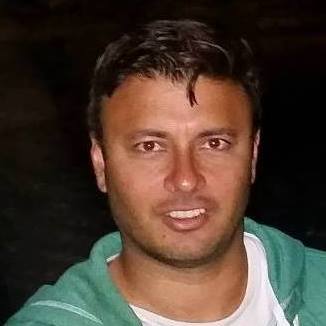Bitscopic CEO Payam Etminani speaks at VBA Conference in Washington DC

By SHASTRI PURUSHOTMA
Bitscopic’s CEO Payam Etminani presented today at the inaugural Veterans Benefits Conference in Washington DC on “Leveraging VBA and VHA Data: A 360-degree approach to AI and Predictive Modeling in Improving Veterans Care.”
Payam emphasized the need to take a broader view of what ‘health’ means:
“Typically, when we look at healthcare data, we are looking at patients clinical measures (vitals, labs, etc). But ‘health’ is much more than this. We need to look at other health determinants of health such as: socioeconomic factors, physical and environmental factors, which will give us a far greater insight into a person’s overall health than just their healthcare records alone.”
He described how Big Data and Machine Learning can play a key role in uncovering new insights in this broader picture of healthcare: “When we talk about big data, we are looking at not just the volume, but also the variety and velocity (how quickly the data is changing). Working with the VA, we have been able to pull from 10 years of electronic health records from VA systems (VistA, TeleHealth, etc) with roughly 9 million unique patients across 170 hospitals in feeds that refresh multiple times per day. We have worked at solving some of the hard problems involved in doing this, for example, normalizing the data. Every single hospital or even doctor may have different conventions for how they record microorganism names. It took us some time, but now we have been able to normalize the data across the 170+ hospitals and can search across the system very efficiently.”

Payam also described how the VA system is uniquely positioned to gain insights because it has such a large and comprehensive data set: “What other organization has not only such a large amount of electronic healthcare data, but also rich population data that can provide new insights when combined together? Machine learning models will be able to give predictive attention to specific cohorts of people even before they become patients (or to prevent them from even becoming patients). Right now, we have developed predictive models that will tell you with a high degree of probability if a patient is going to go septic ahead of time and make recommendations. We look forward to refining these models even further with ‘other health determinants’ data.”
In addition to population data improving healthcare data, Payam described how the benefits can flow in the other direction as well: “The electronic health data can very quickly speed up Veteran’s Benefits Administration processing. For example, if a person has specific hemoglobin levels in their charts, this can automatically be mapped to certain conditions and levels of service injuries and greatly speed up benefits claims processing. In addition, we have done some work with NLP (Natural Language Processing) going through many thousands of patient charts and records where the volume would completely overwhelm human doctors. Much of this work can also apply to benefits processing and related work that involves scanning vast amounts of written records.”
In the discussion following Payam’s presentation, some interesting points were made about the unique cultural nuances of working with a veteran’s medical situation and the need for specialized cultural competency and understanding: “A veteran might be especially inclined to say something like ‘well it hurts but it isn’t killing me so I can just live with the pain,’ but this may give a distorted picture for the purposes of medical diagnosis. So, we need people working in this area who understand the cultural nuances.”
Payam concluded by emphasizing the need for a 360-degree view: “The health of a veteran is not just confined to whether that veteran is disease free but needs to be measured against whole health standards and also against that veteran’s personal goals. It is an exciting time to be working with these advancements in Big Data and Machine Learning to dramatically improve our ability to serve our veterans.”
